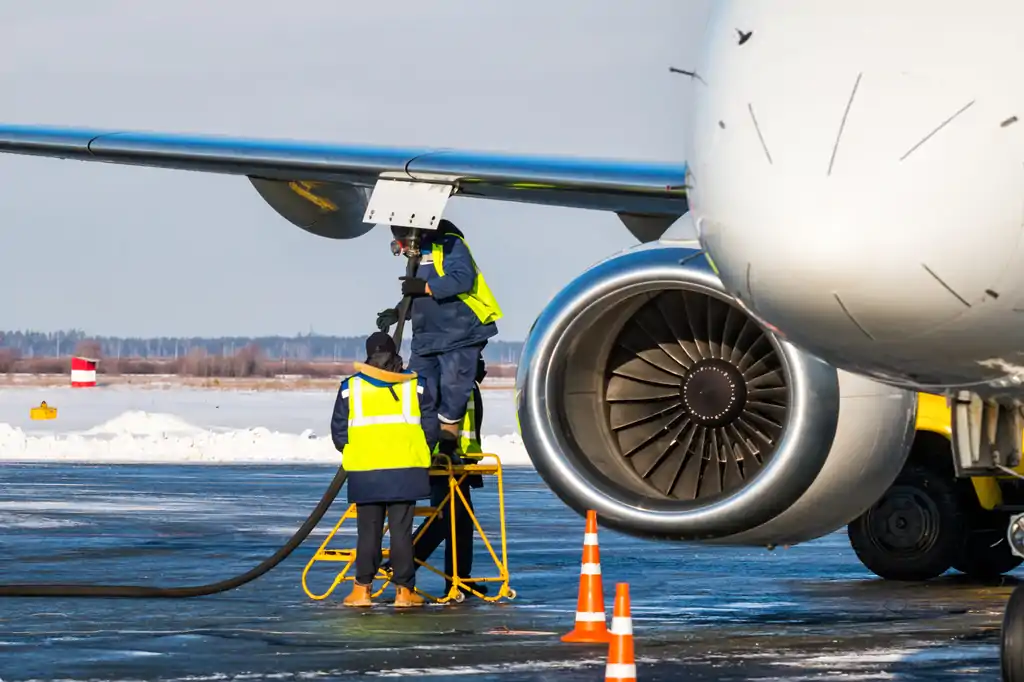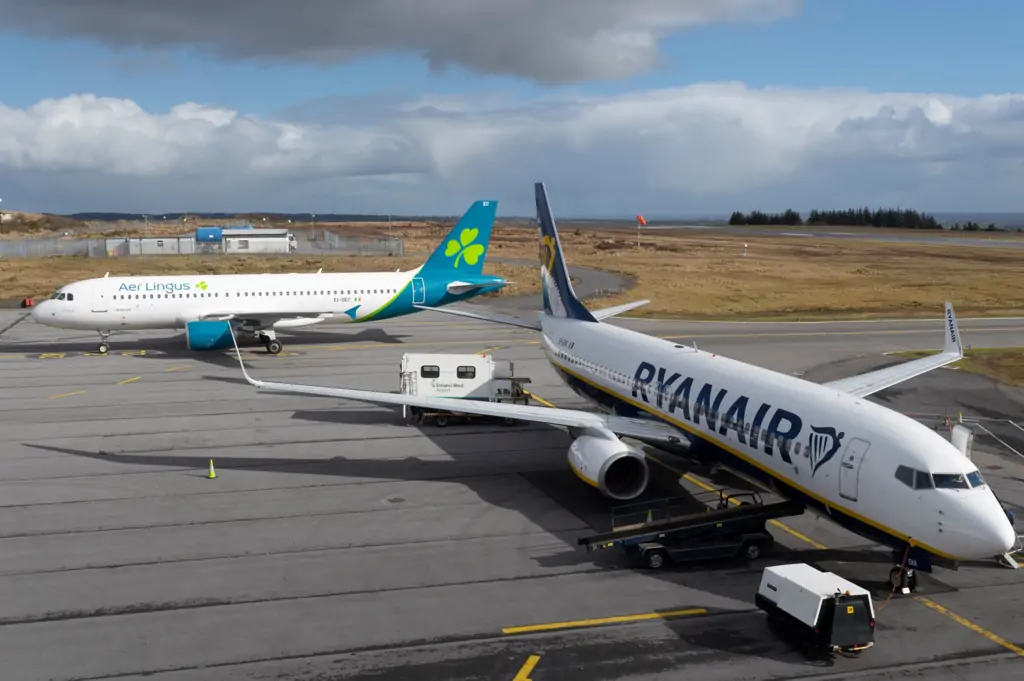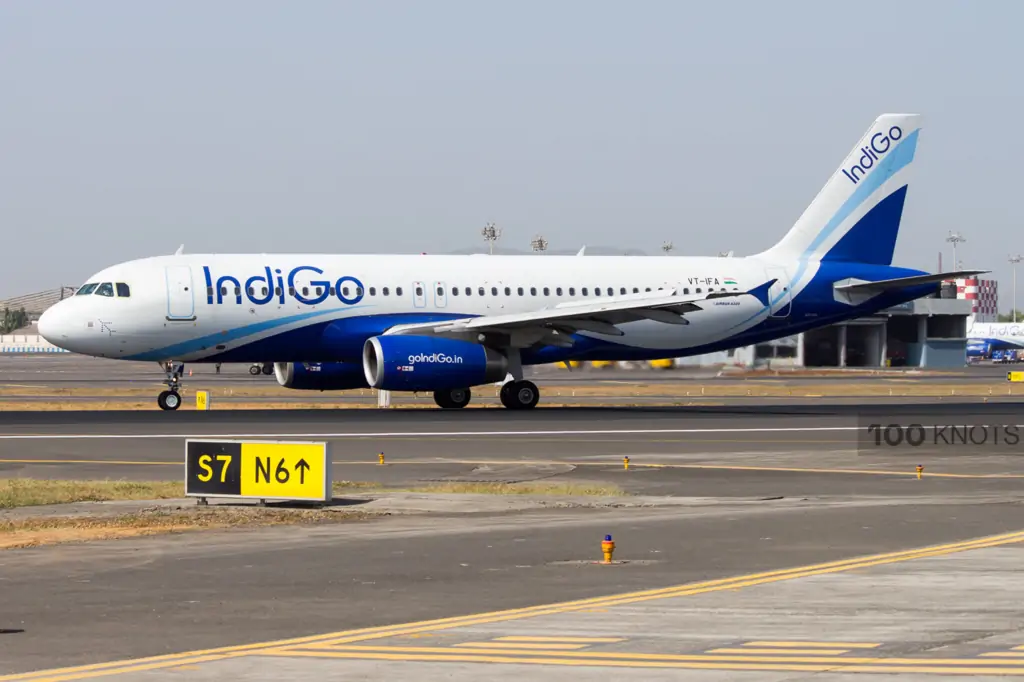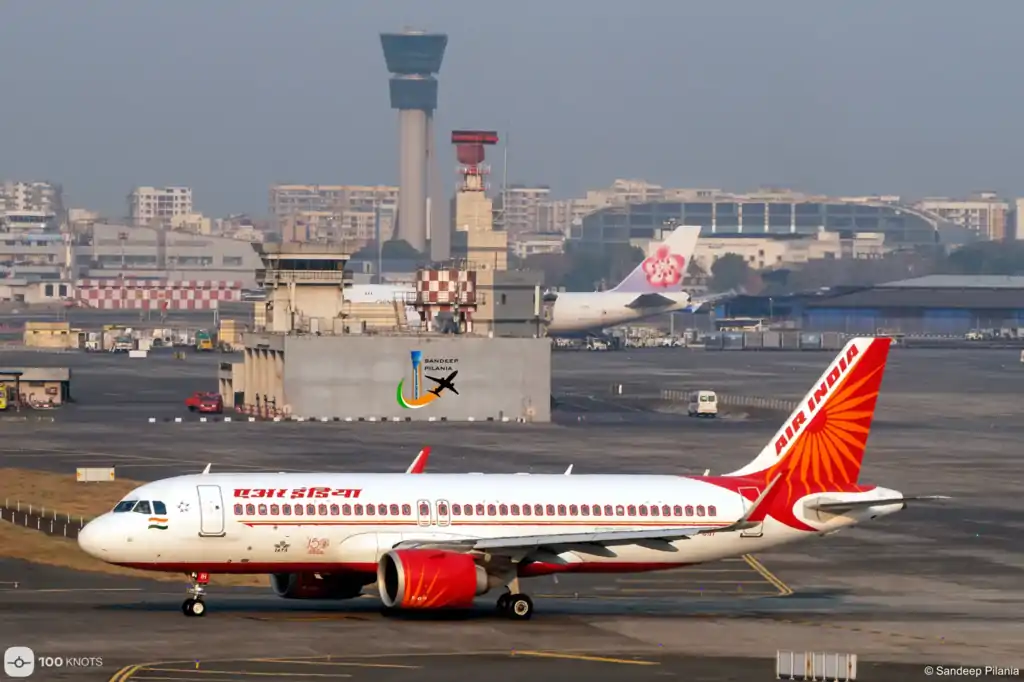Unraveling the Mystery Behind Soaring Jet Fuel Prices: The Crack Spread Conundrum
Abhishek Nayar
16 Apr 2024

In the dynamic world of aviation, where profit margins are notoriously thin, every fluctuation in operational costs sends ripples through the industry. One of the most significant and least controllable expenses for airlines is jet fuel, and recent years have witnessed a perplexing surge in its price, notably driven by an enigmatic phenomenon known as the crack spread. Delving deeper into this issue unveils a complex interplay of factors reshaping the landscape of aviation fuel costs.
Understanding the Crack Spread
Traditionally, airlines have relied on trends in crude oil prices to forecast changes in jet fuel costs. The crack spread, representing the price difference between crude oil and refined jet fuel, has typically remained modest. However, recent years have seen a dramatic departure from this norm, with the crack spread soaring to unprecedented levels.
The War in Ukraine and Energy Markets
The outbreak of conflict in Ukraine in 2022 triggered a surge in crude oil prices, which peaked at over $140 per barrel. Surprisingly, jet fuel prices continued to climb, reaching over $180 per barrel by the summer of 2022. This divergence from historical trends marked the beginning of a period of uncertainty for airlines worldwide.
Environmental Regulations and Refining Costs
Environmental regulations play a pivotal role in shaping the economics of refining petroleum into jet fuel. With stringent regulations imposing taxes and restrictions on every stage of production, refineries face escalating costs. This, in turn, drives up the price of jet fuel, exacerbating the challenges faced by airlines already grappling with narrow profit margins.
The Rise of Sustainable Aviation Fuels (SAF)
The emergence of Sustainable Aviation Fuels (SAF) presents both opportunities and challenges for the aviation industry. Mandates for blending SAF with traditional jet fuel in Europe and elsewhere compel refineries to adjust their operating cost structures, further inflating the crack spread. While SAF holds promise for reducing the industry's carbon footprint, its integration into existing supply chains introduces additional complexities.
Conclusion
The confluence of geopolitical tensions, environmental regulations, and the transition to sustainable fuel sources has reshaped the dynamics of jet fuel pricing in recent years. For airlines navigating these turbulent waters, the challenge lies in adapting to a volatile cost landscape while maintaining operational efficiency and financial viability. As the industry continues to evolve, a nuanced understanding of the factors driving fuel costs will be essential for charting a course towards sustainability and resilience.
Read next
In the dynamic world of commercial aviation, the debate surrounding corporate consolidation is as lively as ever, especially within the European landscape. While airline mergers often tout promises of improved efficiency and expanded networks, the European Union's regulatory agencies have historically taken a cautious stance, fearing negative repercussions on competition and consumer welfare. But beyond the consumer-centric arguments lies a critical question: are mergers truly the panacea for European airlines themselves?
The Consumer Conundrum: Balancing Price and Service
The reduction in the number of competitors through mergers can indeed lead to higher ticket prices, a primary concern for consumers. Advocates of consolidation, however, argue that larger carriers can provide more extensive networks and seamless connectivity, enhancing the overall travel experience. Yet, the European market presents unique challenges, particularly with state-funded carriers facing financial instability and inconsistent service.
Case in Point: Alitalia and the Struggle for Stability
The collapse of Alitalia, once Italy's flag carrier, underscores the fragility of some European airlines. Its successor, ITA Airways, now faces acquisition interest from Lufthansa Group, igniting regulatory scrutiny. This situation reflects broader concerns about the sustainability of European carriers and the implications of consolidation on their future viability.
Structural Hurdles and Economic Realities
Oliver Wyman industry experts highlight significant structural disparities between the European and American aviation markets. Unlike the U.S., Europe lacks large-scale choke point airports, hindering route expansion and innovation. Moreover, divergent economic environments and financial incentives across European nations impede the achievement of economies of scale enjoyed by American legacy carriers.
The Myth of Americanization: Challenges to Replicating Success
While some may envision European aviation mirroring the rapid expansion and profitability of its American counterpart through consolidation, reality paints a different picture. The European market's unique complexities and fragmented nature suggest that replicating the American model may not yield the same results. Even merged entities like Air France-KLM maintain separate operations, highlighting the challenges of integration in a diverse market.
A Call for Nuanced Solutions
As the debate rages on, it becomes clear that simplistic solutions may not address the multifaceted challenges facing European aviation. While consolidation may offer benefits in certain contexts, a one-size-fits-all approach risks overlooking the intricacies of the European market. Instead, stakeholders must pursue nuanced strategies that balance competition, consumer welfare, and industry sustainability.
Conclusion: Beyond Consolidation
In the quest for a thriving European aviation industry, the path forward requires careful navigation of regulatory, economic, and operational landscapes. While corporate consolidation presents potential advantages, it is not a silver bullet. Rather, a holistic approach that addresses structural hurdles, fosters innovation, and prioritizes consumer interests is essential. Ultimately, the future of European aviation hinges not solely on consolidation, but on strategic foresight and collaborative efforts to overcome its unique challenges.
Read next
IndiGo will start direct flights between Abu Dhabi and Chandigarh, from May 15.
This new route will further strengthen IndiGo’s international connectivity, with daily non-stop flights connecting the thriving capital city of United Arab Emirates to the vibrant beauty of Chandigarh, the airline said in a statement adding, that the launch of this route will provide enhanced flight options, seamless connectivity, and ease of accessibility for businessmen and travellers commuting between India and the UAE.
Vinay Malhotra, Head of Global Sales, IndiGo, said, “We are pleased to announce direct flights between Abu Dhabi and Chandigarh. This new route will offer customers increased options to travel between the UAE & North India. With the addition of these flights, IndiGo will now operate 63 weekly flights to Abu Dhabi from 9 cities in India, promoting travel, trade, tourism and fostering the abundant socio-cultural diversity between the two countries. IndiGo remains committed to delivering on its promise of affordable, on-time, courteous, and hassle-free travel experience across an unparalleled network.”
Abu Dhabi, the capital of the UAE, is famous for its stunning islands and record-breaking theme parks, impressive architecture, cultural landmarks, and stunning shorelines. The city’s rapid development and urbanisation, coupled with the massive oil and gas reserves, have transformed it into a large, developed metropolis. Some of the famous attractions include Sheikh Zayed Mosque, Ferrari World, the Louvre Abu Dhabi, Yas Island, Emirates Park Zoo, and Al Ain Palace Museum.
Chandigarh, which serves as the capital of two Indian states - Haryana and Punjab, is renowned for its architecture, urban design, and modernization. Created by Swiss French architect Le Corbusier, the city is charming with its many lakes and gardens, grand civic buildings, public monuments, and elegant boulevards. Some of the famous tourist attractions are the Rock Garden, Sukhna Lake, and the Capitol Complex. With its clean and green environment, Chandigarh is a popular destination for both business and leisure travellers.
Read next
Credit rating agency ICRA has stated that domestic air passenger traffic grew by 13 per cent to 15.4 crore in 2023-24, while the aviation industry's net loss is expected to be around Rs 3,000 to 4,000 crore during the same period.
The domestic air passenger traffic in FY2024 has surpassed the pre-Covid levels of 14.2 crore in FY2020 as well.
The airlines’ capacity deployment in March 2024 was higher by 2% than that of March 2023 and was higher by 9% over February 2024.
It is estimated that the domestic aviation industry operated at a passenger load factor (PLF) of 90% in March 2024, against 88% in March 2023 and 89% in February 2024.
Icra noted that the airlines' ability to raise yields proportionate to their input cost increases will be key to expand their profitability margins while supply chain challenges and engine failure issues pose near term headwinds.
The report further noted that the country's aviation industry is expected to report a significantly lower net loss of Rs 30-40 billion in FY2024 and FY2025 over Rs 170-175 billion in FY2023.
The rating agency said it has a stable outlook for the aviation industry amid continued recovery in domestic and international air passenger traffic, and relatively stable cost environment and expectations of the trend continuing in FY2025.
“Icra’s outlook on the Indian aviation industry is stable on the back of the fast-paced recovery in domestic passenger traffic in FY2023 and H1 FY2024 and expectations of the trend continuing in H2 FY2024. Moreover, the industry witnessed improved pricing power, reflected in the improved yields and thus the revenue per available seat kilometre – cost per available seat kilometre (RASK-CASK) spread of the airlines," the rating agency said, adding, “While domestic airlines have a partial natural hedge to the extent of earnings from their international operations, overall, their net payables are in foreign currency. The airlines’ efforts to ensure fare hikes, proportionate to their input cost increases, will be the key to expand their profitability margins."
Read next
Air India has deployed five new contact centres, in a bit to offer round-the-clock assistance to its customers worldwide.
It has partnered with Concentrix, a California-headquartered customer engagement firm, to manage premium services from centres in Mumbai, Cairo, and Kuala Lumpur. The airline has also signed up iEnergizer, to operate contact centres in Noida and Bengaluru, focusing on domestic inquiries.
Air India recently introduced a premium desk exclusively tailored for its premium Frequent Flyer members, as well as business and first-class guests. The dedicated service offers personalised assistance, further enhancing the overall travel experience for these esteemed segments of passengers, the airline said in a statement.
"Our customers are at the core of our operations. The enhancement and expansion of the contact centres is a testimony to Air India's commitment to providing comprehensive support to our customers and is a step towards building Air India into a world-class global airline," Rajesh Dogra, Chief Customer Experience Officer, Air India, said during the launch of the Mumbai centre.
Air India has implemented a comprehensive back-office insourcing strategy to manage emails, social media, and chat support internally to effectively assist our valued customers. A 24/7 grievance management desk promptly addresses all customer queries, and escalations and provides round-the-clock support. A robust quality and training governance framework has also been established to ensure that the employees adhere to best-in-class standards and enhance their skills, it added.
Recently Air India launched its redesigned website and airline industry’s first Generative AI chatbot- AI.g. The chatbot provides seamless accessibility on the website as well as on WhatsApp opening a new guest support channel, and helping travellers to ask questions across 1300+ travel-related topics.
Read next
Akasa Air will begin flights to Prayagraj next month making it its 22nd destination, the airline said in a statement.
Starting on 25th May, the airline will operate daily flights between Mumbai and Prayagraj to enhance connectivity and convenience between the two cities.
The addition of Prayagraj is a significant milestone as it is the fourth city from Uttar Pradesh to be a part of Akasa Air’s network, strengthening its presence in North India, the airline noted.
Praveen Iyer, Co-Founder and Chief Commercial Officer, Akasa Air said, “We are happy to introduce Prayagraj, as the 22nd destination, in our network. Known for its rich cultural heritage, Prayagraj is rated among the most popular tourist destinations in Uttar Pradesh and has been witnessing an uptick in domestic and international tourism, attracting travelers from around the world. The launch of daily flights from Mumbai will further augment economic activity in the region and provide enhanced connectivity options to travellers. As India’s fastest-growing airline, we are committed to bolstering economic progress by providing an affordable, on-time, and seamless flying experience.”
Belson Coutinho, Co-Founder and Chief Marketing & Experience Officer, Akasa Air said, “We are thrilled to bring the Akasa experience to Prayagraj, a city of great historical and spiritual significance. As India’s most on time airline, service excellence is deeply embedded in Akasa Air’s DNA and we are proud to offer a variety of signature products and superior cabin experiences that are a testament to our commitment of providing a flying experience that is second to none. Since our inception, we have received immense appreciation for our fresh in-cabin experience that allows passengers to stretch out with more legroom, indulge in our unique Café Akasa products, and opt in for category-defining offerings such as Pets on Akasa. Moreover, customers can enjoy greater flexibility with our Select Your Seat program and other enriched Add-Ons. As we expand our footprint, Akasa Air remains laser-focused on delivering an industry-leading customer experience.”







Comment